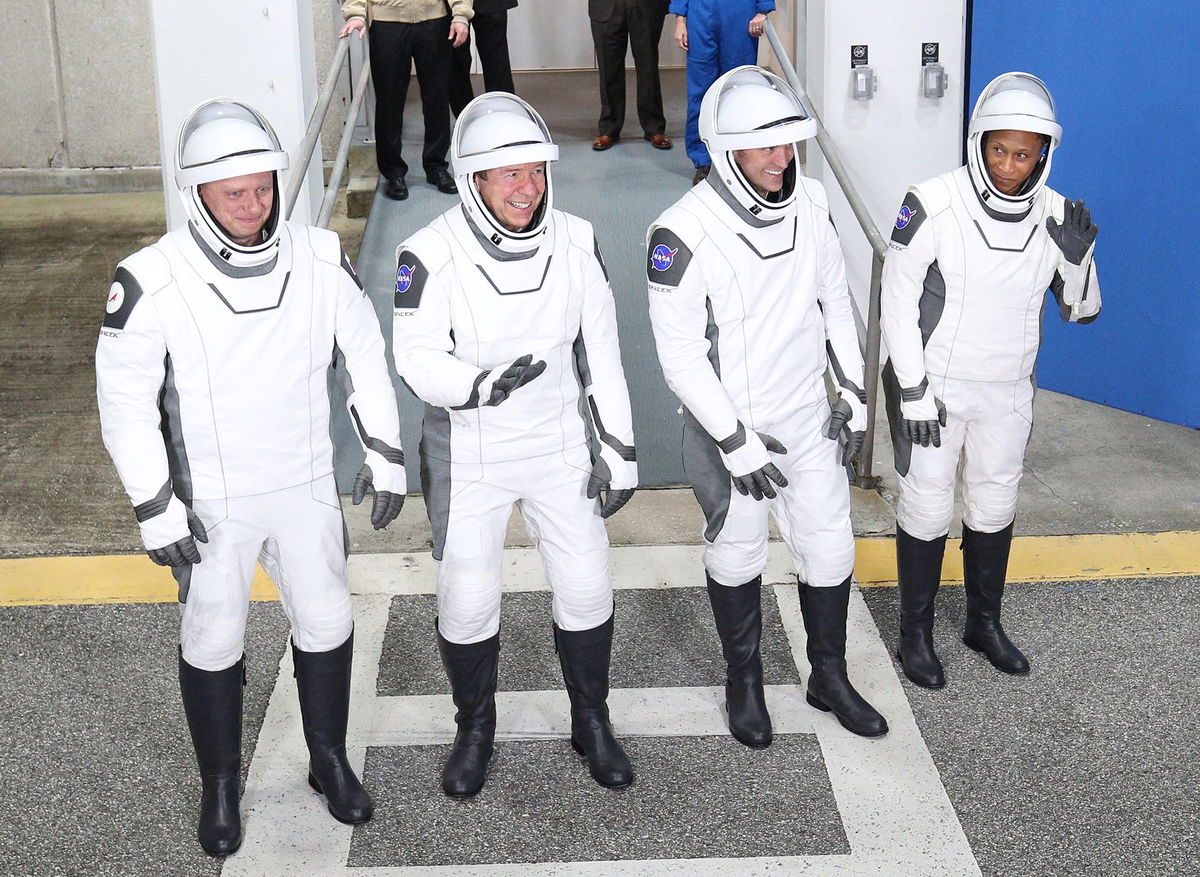NASA astronauts on readjusting to life on Earth: ‘It’s hard to sit’

The Crew-8 astronauts are seen before heading to the launchpad on March 3. The group includes (from left) Roscosmos cosmonaut Alexander Grebenkin and NASA astronauts Michael Barratt
By Jackie Wattles, CNN
(CNN) — Three of the astronauts who were unexpectedly hospitalized after returning from the International Space Station in late October discussed the SpaceX Crew-8 mission during a NASA news conference on Friday. The trio revealed some anecdotes about the trials of readjusting to life on Earth after spending more than 230 days in space.
The astronauts remained tight-lipped about the nature of the medical issue that had left an as-yet-undisclosed crew member hospitalized overnight. But they did discuss some of the symptoms they have experienced during the readjustment to life under the effects of gravity.
“I’m a first-time flyer, and fascinated by the readaptation,” said NASA astronaut Matthew Dominick, who served as mission commander. “The big things you expect — being disoriented, being dizzy. But the little things like just sitting in a hard chair … My backside has not really sat in a hard thing for (235) days.”
Dominick added that he was recently sitting outside with his family eating dinner and was forced to lie down on a towel in the yard to remain part of the conversation because his seat proved too uncomfortable.
“That wasn’t in a book I read,” Dominick joked. “Hey, you’re going to space. It’s going to be hard to sit on a hard chair.”
Dominick and fellow NASA astronauts Michael Barratt and Jeanette Epps fielded questions Friday while their fourth crewmate, Russian cosmonaut Alexander Grebenkin, did “not participate because of his travel schedule,” according to a NASA news release.
“The weight and the heaviness of things just is surprising,” Epps said of her experience returning to Earth. “(I’ve been) laying any chance I got. But you have to move, and you have to exercise every day, otherwise you don’t get those gains. You have to move regardless of how exhausted you feel.”
Barratt, Dominick, Epps and Grebenkin spent 235 days in space before returning to Earth with a splashdown landing off the coast of Florida aboard a SpaceX Crew Dragon capsule on October 25.
The SpaceX capsule “executed a normal entry and splashdown,” according to NASA, and all four crew members could be seen smiling and waving as they exited the vehicle aboard a recovery ship.
Hours later, however, NASA revealed that the entire crew had been taken to a nearby hospital — Ascension Sacred Heart Pensacola — “out of an abundance of caution.”
The space agency later disclosed that one of the astronauts had experienced a medical issue and remained at the hospital overnight.
NASA did not disclose which astronaut remained hospitalized nor did the space agency share any details about the medical issue, saying in a statement only that the crew member was “in stable condition” and “under observation as a precautionary measure.” The three NASA astronauts repeatedly declined to comment on the matter Friday.
“In the fullness of time, we will allow this to come out and document it for now, medical privacy is very important to us,” Barratt, a medical doctor and veteran astronaut who piloted the Crew-8 mission, said. “Medical privacy and the processes we have going on right now negate our ability to (discuss the issue).”
Medical checkouts are routine after long-duration missions to space. However, astronauts are typically transported directly back to their home base in Houston after splashdown, rather than diverted to a nearby hospital, for reconditioning as they transition back to Earth’s environment.
Boeing Starliner’s impact on Crew-8’s return
The Crew-8 astronauts launched into space on March 3 and remained in space longer than expected.
Among the roadblocks for their return to Earth were schedule changes related to issues with the Boeing Starliner spacecraft, which had carried NASA astronauts Butch Wilmore and Suni Williams to the space station on a test flight in early June but was deemed too risky to return its crew back to Earth.
NASA ultimately chose to send back the Boeing spacecraft empty and moved Starliner’s astronauts onto the SpaceX Crew-9 mission, delaying the launch of that mission. That schedule adjustment in turn delayed Crew-8’s return because Crew-9 had to arrive at the orbiting laboratory for a handoff of duties before Crew-8 could disembark.
Weather delays also pushed Crew-8’s return into late October.
While the 235-day mission was a few weeks longer than routine trips to the orbiting outpost, it’s not a record-setting stay in space for the astronauts.
Astronauts commonly extend their stay aboard the space station for days, weeks or even months as unexpected events arise.
NASA astronaut Frank Rubio, for example, logged a record 371 days in space during a mission that concluded in September 2023. Rubio’s stay was extended after his original ride to low-Earth orbit — a Russian Soyuz capsule — sprang a coolant leak while docked to the space station.
The-CNN-Wire
™ & © 2024 Cable News Network, Inc., a Warner Bros. Discovery Company. All rights reserved.